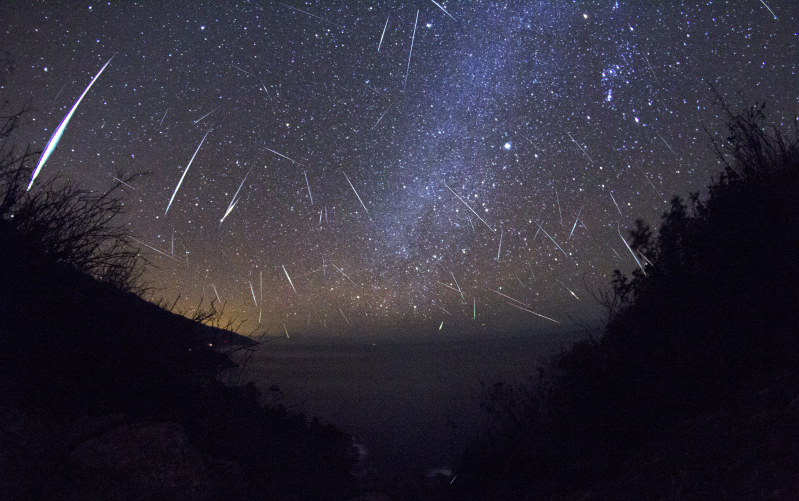
It is a perfect time to spend with someone special. Grab a coat and look at the beautiful night sky. The Geminid meteor shower will be in full swing in the nights of Dec. 13 and Dec. 14. Veteran sky watchers said it is going to be the best meteor shower this year.
The Slooh Community Observatory will stream the spectacular sky display on Monday Dec. 13 beginning at 6 p.m. EST (2300 GMT). It will be hosted by astronomy expect Paul Cox. The live stream will feature different views from five countries on four continents. Visit the observatory's website for more details: http://www.slooh.com.
The live telecast is for curious science fans that do not have an opportunity to watch the Geminid meteor shower directly. But if you're located in the Northern Hemisphere, you can see it live in your own eyes, just be sure to cover up before going outside.
According to the Royal Astronomical Society (RAS) in the United Kingdom, meteor showers are best seen with the naked eye. Telescopes and binoculars could not only distract your sky watching experience. Also, keep in mind that viewing conditions may vary depending on what time viewers look skyward.
LA times published that you can look at the meteors in the early evening just after the sun sets. During that time, the meteors have long, dramatic streaks of light that linger in the sky for a few seconds.
Later in the evening, around 10 p.m. PST, the light trails on the meteors will be shorter, but they are more prolific. The best way to observe the Geminids is to find the darkest spot in the sky.
The "shooting stars" that can be observe during meteor shower event are pieces of rocks burning up in Earth's atmosphere. The annual Gemined meteor showers are the debris of cosmic object called 3200 Phaethon. Our planet passes through the pathway of the debris once every year. It is called Gemined because it appears to radiate from a point in the constellation Gemini.
NASA reported that 3200 Phaethon was "long thought to be an asteroid," but they now considered it as "extinct comet," which means that water ice and other materials on its surface are now totally evaporated, leaving only its rocky body. Moreover, 3200 Phaethon is just three miles wide, and it orbits the sun once every 1.4 years.
Most meteors are visible at around 60 miles (96.5 kilometers) up. Some large meteors splatter, causing a brighter flash called a fireball, which can be observe even during daytime and heard up to 30 miles (48 km) away.
Veteran sky watchers advised first time observers should try to refrain from glancing at their cellphones, because it might ruin their vision. Moreover, cover up with warm clothes and blankets. Enjoy the night while watching the beautiful universe.







